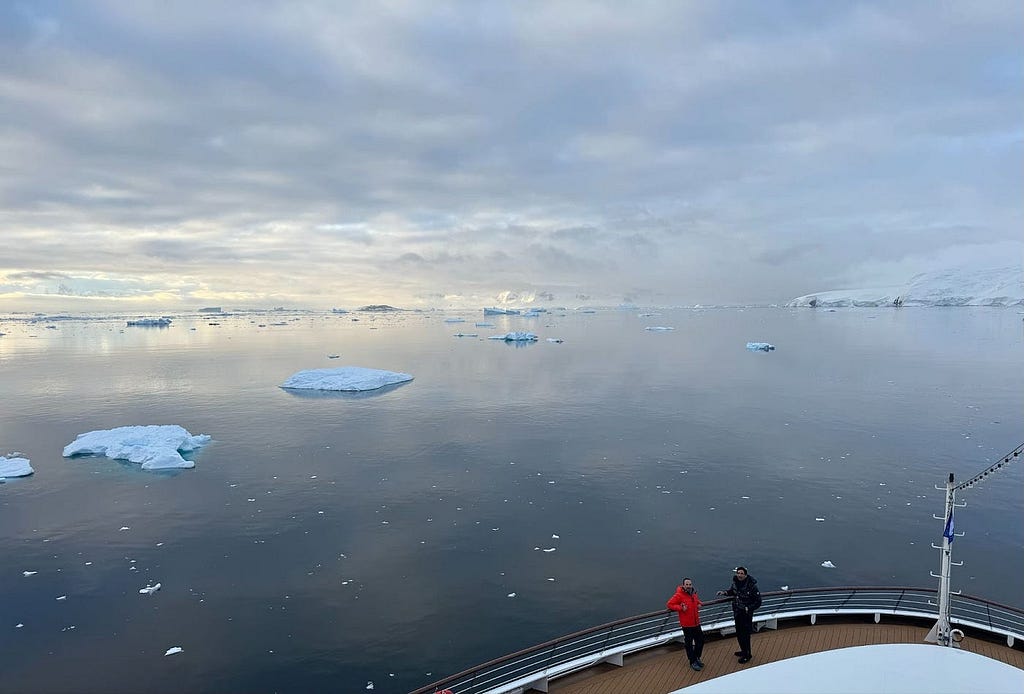
“The real voyage is not in seeing new landscapes, but having new eyes.”
— Marcel Proust
In an era where the digital and physical worlds have increasingly intertwined, Arthur Madrid and Sebastien Borget, Co-Founders of The Sandbox, embarked on a journey far from the digital space to one of the planet’s untouched gems: Antarctica. Arthur and Sebastien’s revelations in the cold, icy, and glacier-infused South Pole have shown the parallels between the decentralization elements of the metaverse and the world’s most uninhabited place.
Below, Seb and Arthur share some revelations about their journey, the future of the metaverse, and the human condition.
INTRODUCTION
“The last 15 years of building tech companies together brought us to this moment, where we decided to travel and use the time to think about what we achieved and which direction The Sandbox should take.
“We wouldn’t be honest in saying we thought that one day we would travel to Antarctica — a place that is defined as the only uninhabited place on Earth. For most, the South Pole is an imaginary word you discover as a kid when you search the world map for the first time. The first travel plan I ever made was through my imagination, looking at the map… from France to Honduras, to Argentina, and finally to Antarctica, crossing oceans with the movement of my finger.
“But when you arrive there in real life, it feels like a point of no return, where you somehow believe the earth ends.
“Antarctica may feel like another planet, but it is in fact our own. It serves as the place where climate scientists look to understand how continents were shaped over billions of years by looking at and analyzing stones that keep testimony in their deepest levels.
“So here we go, sharing an adventure to the ends of earth, hoping to discover new perspective to guide us in what we do — building the metaverse.
“As Seb always says all over the world with Yat Siu: ‘The metaverse is here, everywhere, and will be forever.’” — Arthur Madrid.
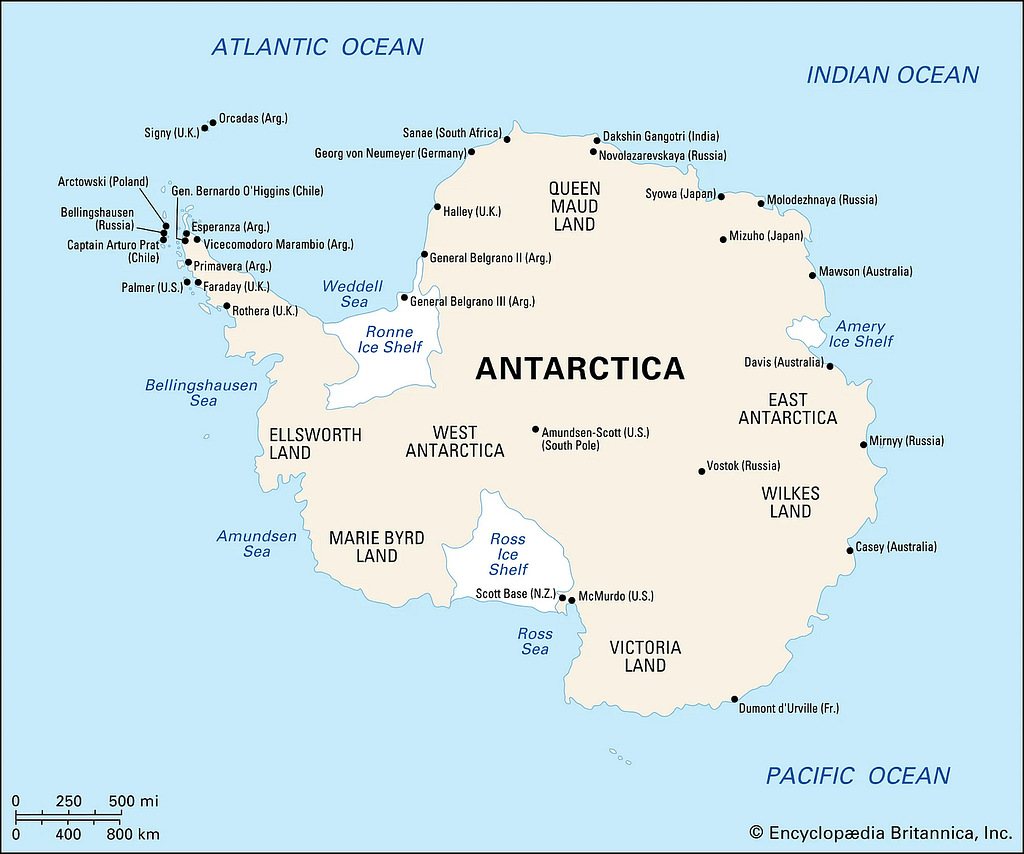
(Map of Antarctica)
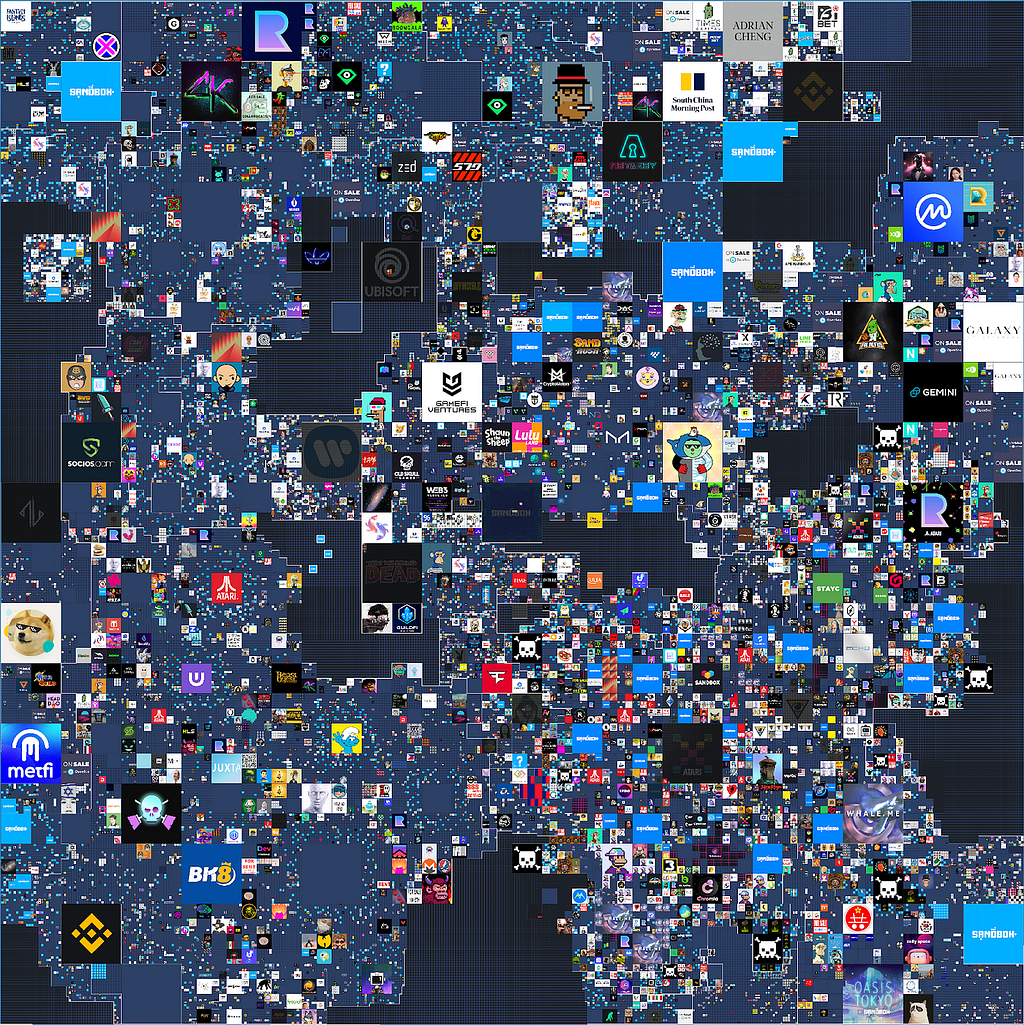
A MODEL OF GOVERNANCE
Our boat trip to Antarctica was organized by an active member of the IAATO (The International Association of Antarctica Tour Operators). This voluntary organization advocates for safe and environmentally responsible private-sector travel to the Antarctic. There are important rules to follow in order to not affect the wildlife and give a chance for other explorers to discover Antarctica in the same mint condition as we had.
Antarctica is a land of peace and scientific research, and we discovered that no single country owns it. Instead, Antarctica is governed by an international organization that 56 countries adhere to as they have signed the Antarctic treaty. The governments work together under the Antarctic Treaty and the IAATO, which protects Antarctica by bringing together a committee of member nations. This voluntary organization sets industry standards that protect Antarctica.
While Antarctica doesn’t have law or jurisdiction or legal system, citizens of other countries who commit any infraction and do not respect the rules established by IAATO will be subject to pursuits within their own jurisdiction/country.
Members of the IATTO meet once a year and they vote together to pass policies, procedures, and guidelines through a democratic vote, often going over and above the minimum requirement.
IAATO’s guidelines cover all parts of Antarctic tourism, including wildlife-watching, emergency evacuation, staff-to-passenger ratios, and restrictions on the number of people ashore. Often, the guidelines go above and beyond the minimum requirement, not just to reduce impact but to be an active force for good. Recent updates include:
- A revised code of conduct to reduce boats striking whales
- Clean Seas policy unilaterally accepted
- A blanket ban on drone usage
To our team at The Sandbox, the IAATO stands as a prime example of decentralized governance, potentially setting a precedent for the DAO (Decentralized Autonomous Organization) of The Sandbox and how it could run with council members from all partners.
It is a groundbreaking example of setting standards in governance and self-policing by the community of members, and one that we’ll look into for the metaverse as the community of Players, Creators, and LAND owners should also set their Moderation and Community Guidelines.
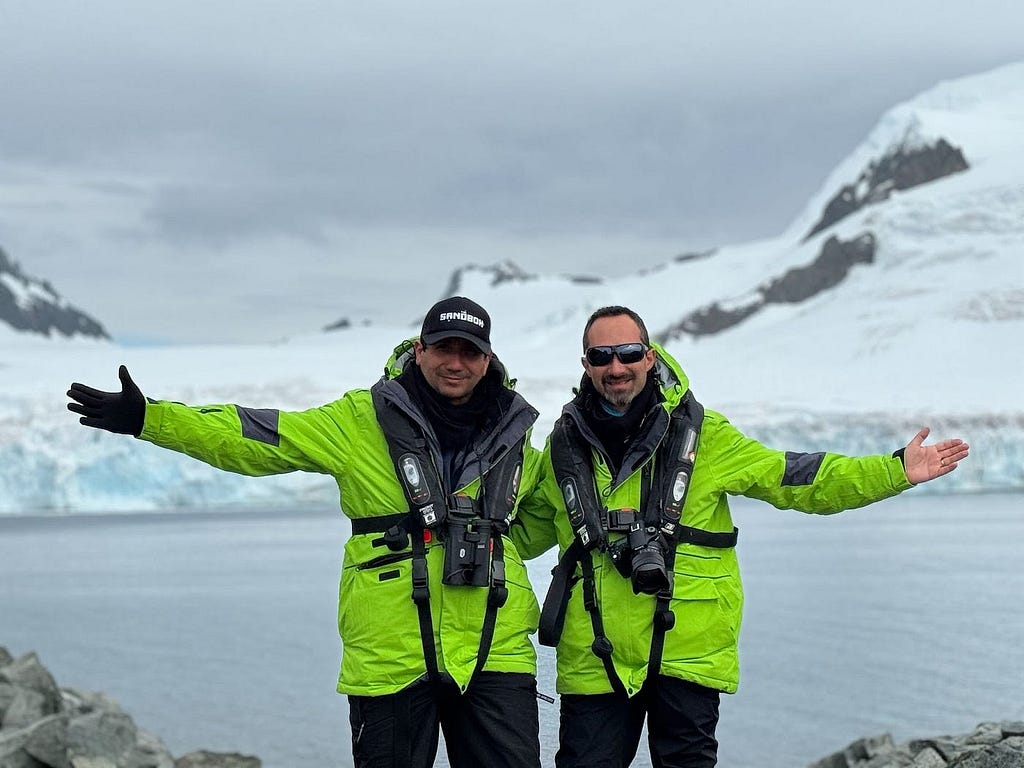
BUILDING A WORLD FOR THE FUTURE GENERATIONS
When we arrived in Antarctica, we were taken by its physical beauty. It wasn’t long, however, before we started to understand the impacts climate change has had on the region. As a society, our mission should be to leave our planet in the same or better situation than the one we inherited from our ancestors. Unfortunately, we’ve fallen short on this mission.
While some may choose to look in the other direction, the challenges of globalization, geo-political conflicts, the rising middle class in developing countries, and the global consumerism attached to it, there is no more denying that human actions have accelerated the global warming process and climate change. We’re living in a warm period of an Ice Age, but the speed of the changes we’re seeing is like nothing before.
We learned in our travels that the Antarctic Ocean is a substantial marine carbon sink — about a third of the world’s carbon emissions are trapped and pulled into the ocean. This ice is more than just frozen water; it acts as a natural ventilator through the Albedo effect and helps keep our planet cooler. About two-thirds of the oxygen we breathe is produced by marine phytoplankton in cold waters. Thus, we need to protect these environments in any way possible.
Some scientists in Antarctica have studied ice cores that are sights of carbon and other molecules, showcasing that the levels have skyrocketed from the 20th century to today, showing just how much impact human activity has had in such a short time.
Learning all this lit a fire inside us. We need to find ways to limit our impact on the planet so that we can leave a world behind for our children and their children. But how can we do this in our daily work? This was one of the many questions that entered our mind during this great adventure.
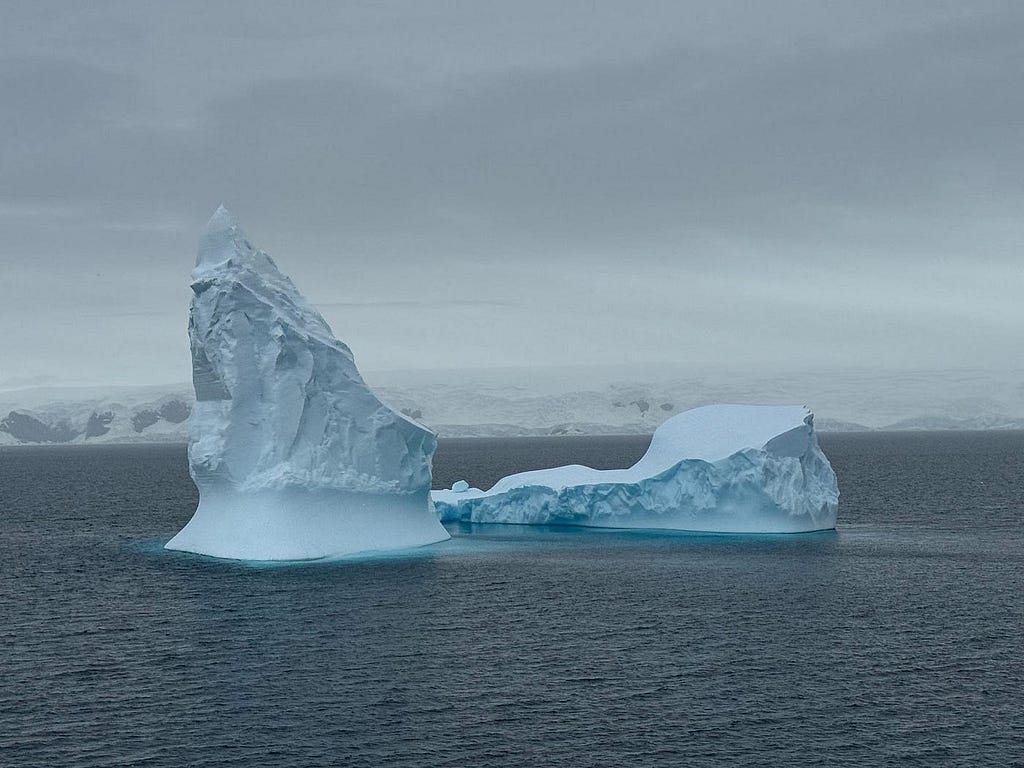
PRESERVING OUR PHYSICAL & VIRTUAL WORLDS
Seeing the effects of climate change on such a beautiful region of our planet led us to consider ways that we can help. Now more than ever, we’re committed to creating a tangible impact by offsetting the carbon footprint generated by our players, community, and platform. We aim to link our virtual LANDs, avatars, and blockchain activities directly to the regeneration of forests and buying carbon credits.
It’s a first step, and we’re looking to do more in this direction as we also open this new Neighborhood on The Sandbox map. In the long term, we hope to set a future for the next generation where creative work in virtual worlds is normalized, and by shifting content and goods production more towards digital realms, the development of digital economies will help create a better world both physically on planet Earth and virtually for our children and the children of our children.
During our travels, we also learned about the project Happywhale, where every person on a tourist tour can contribute towards scientific research of tracking whales by sharing pictures of their tales and including the GPS coordinates so that scientists can determine them (each whale has a unique shape, color, and patterns on the tail, making them uniquely identifiable) and track their migration around the world.
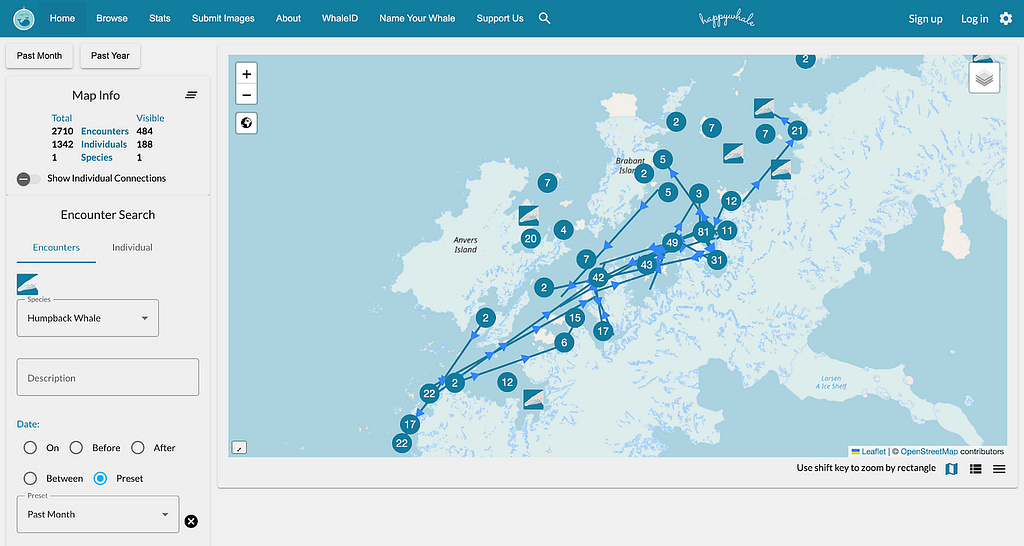
(Map of humpback whale encounters built from users’ contributions to happywhale.com)
To help, we are launching a Virtual Neighborhood of 1,000 LANDs, and all proceeds will go to non-governmental organizations (NGOs). Part of this pledge includes supporting programs such as Happywhale through virtual experiences that educate players on Antarctica’s mission to do social good with the whales in an entertaining manner. This will be one of many Play to Learn programs we launch to educate players on environment, sustainability, and ecology in the metaverse.
Just like with our own world, we aim to leave our digital world better for future generations. A future where that recognizes the Creators’ Economy and Property Rights. We believe our ecosystem is building the foundation for future generations of Creators to live by.
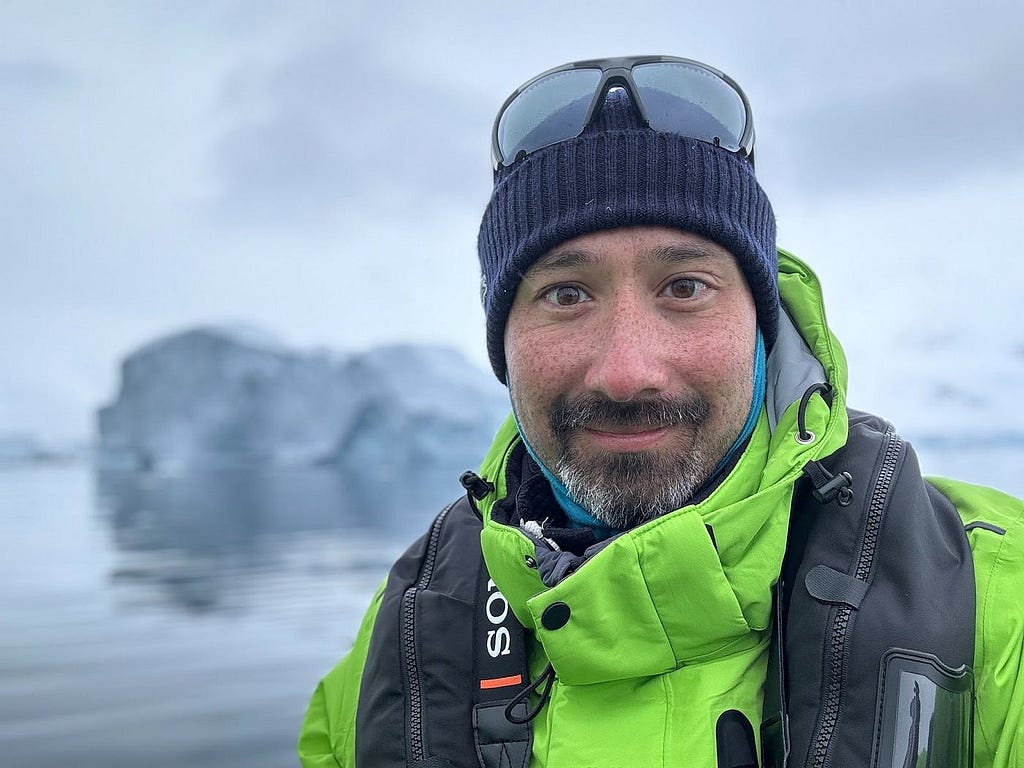
THE IMPORTANCE OF EDUCATION & ECOLOGY
As we collaborate with top-tier brands and partners at The Sandbox, we have the chance to curate some of the content we launch with them and always think about how we use the metaverse as a driving force for good, social, and environmental impact.
Video games are an interactive medium; they offer a universal language that allows us to discover, learn, and educate in less conventional ways. Various scientific studies have proven that learning through playing is the best way to memorize and engage.
The metaverse is a technology that can reach more people, involve the younger generation, and last longer as a medium to collaborate. We see the metaverse as a driving force to bring awareness and offer a new format for learning with our Play and Earn model.
Combined with our strategy of bringing culture and entertainment together with gaming, we also want to engage our community of Creators in making user-generated content via Game Jams and various contests around the important topics of environment, sustainability, and ecology.
For instance, exploring the role of ice and glaciers, particularly how they reflect 90% of the planet in Antarctica, highlights their significance in cooling our planet. Players can understand the delicate balance of wildlife ecosystems and the importance of not disrupting them through gamification strategies. There is so much to be learned, and so many games to be played!
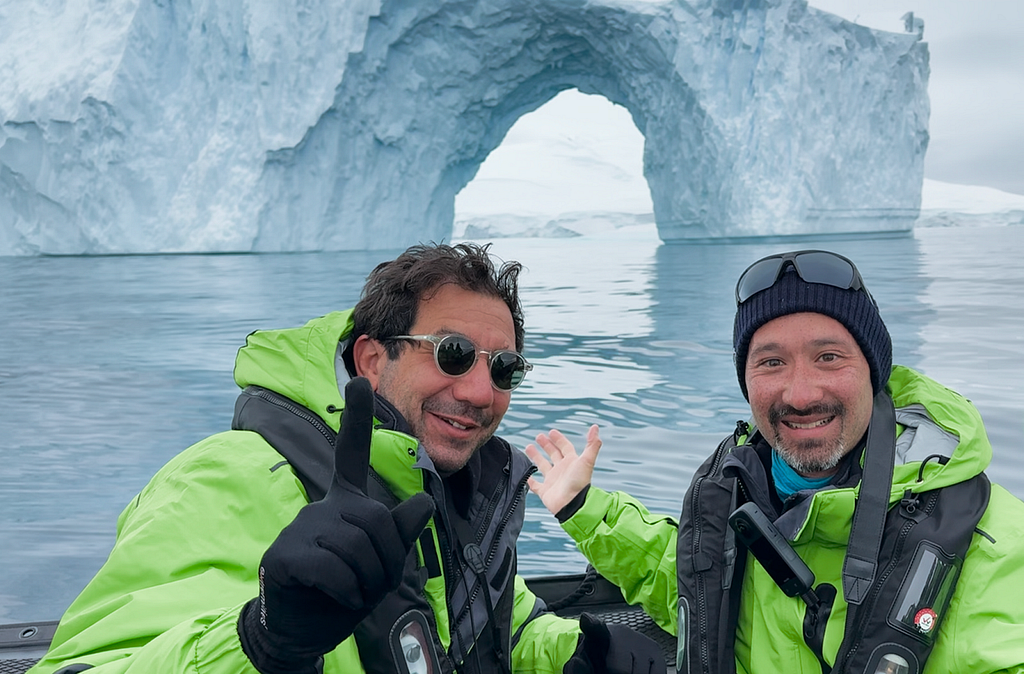
LESSONS LEARNED
Our travels taught us many things about ourselves, our planet, and, surprisingly, The Sandbox. More importantly, it created space in our minds to ask questions and explore new ideas.
As we stared at the massive blocks of ice in every direction, we discovered a new perspective of dimension: where each ‘block of ice’ combines nature and art in symbiosis, inspiring us at every moment.
The great expanse of Antarctica left us with a new view of time, in which LAND NFTs could exist in the blockchain for decades, centuries, and hopefully, millennia.
Like many who have come before us, we stared up at the unadulterated night sky in all its majesty, taking with us a new view of space as we create a new place to build upon.
The IAATO gave us a new eye on governance, where one can feel inspired to create new digital organizations between virtual worlds.
Lastly, we pondered, as we often do, the building of the metaverse. What is the metaverse but a new continent in a new era, opened with no frontier, built and governed by people — a place for explorers and creators.
LOOKING AHEAD
Traveling allows us to look at things with new and fresh eyes. This journey to Antarctica taught us a lot, and we hope to continue exploring different parts of our great planet. Looking back on our adventure we’re reminded that through exploration, we open our eyes not just to new places but also to learn more about ourselves, the human condition, and our role within this planet we call home.
Just like Antarctica, The Sandbox could be a destination where millions of people become true explorers, the heroes of their adventures. Every new LAND explored will make them proud, curious, and excited to open their minds to greater learnings and discoveries.
As we look towards the next decade with The Sandbox, it becomes clear that the future of The Sandbox (and of planet Earth) is tied to our collective commitment to education, ecology, preservation, and an innovative approach to governance.
Onwards,
Seb & Arthur
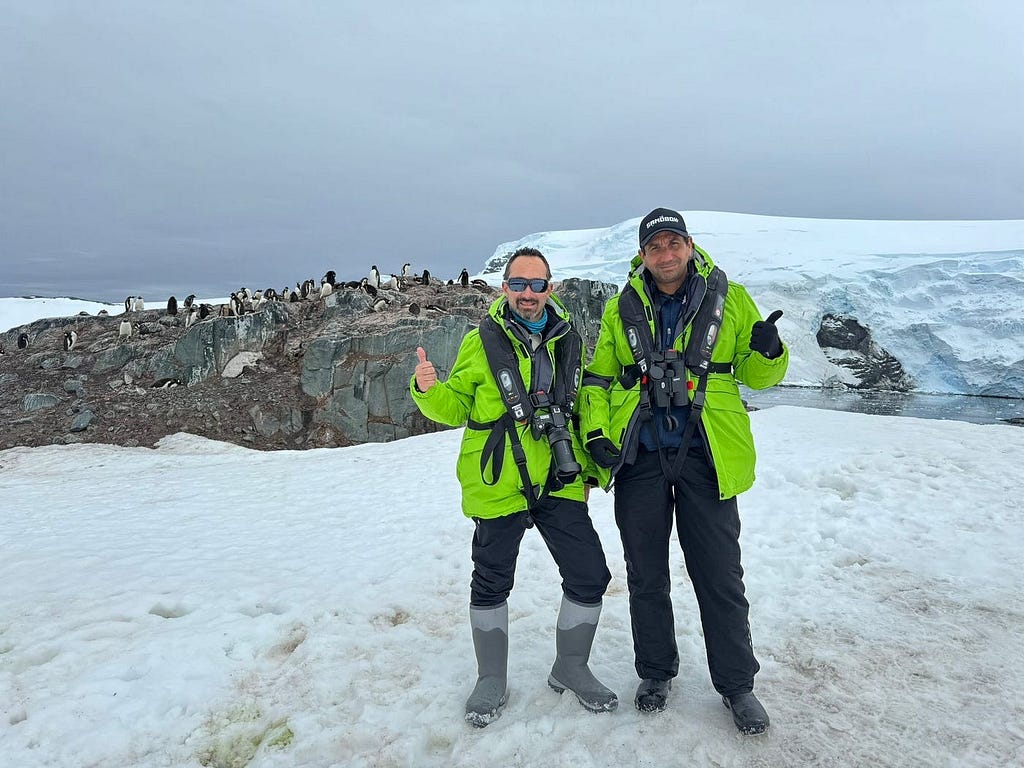
OH, AND SOME WILDLIFE SHOTS!
While on the boat, we also discovered a passion for photography, and while we will not pretend to call ourselves “professionals”, we enjoyed observing Antarctica through the lens of a Sony DSC-RX10M4 and the latest iPhone 15 Pro Max. We took great shots of whales, penguins, seals, icebergs, and also cinematic and Apple Vision Pro videos that we edited here to enjoy on a large TV screen or with your XR headset.
https://medium.com/media/c201fdeda6b9a1dd54c2e8773b511966/href
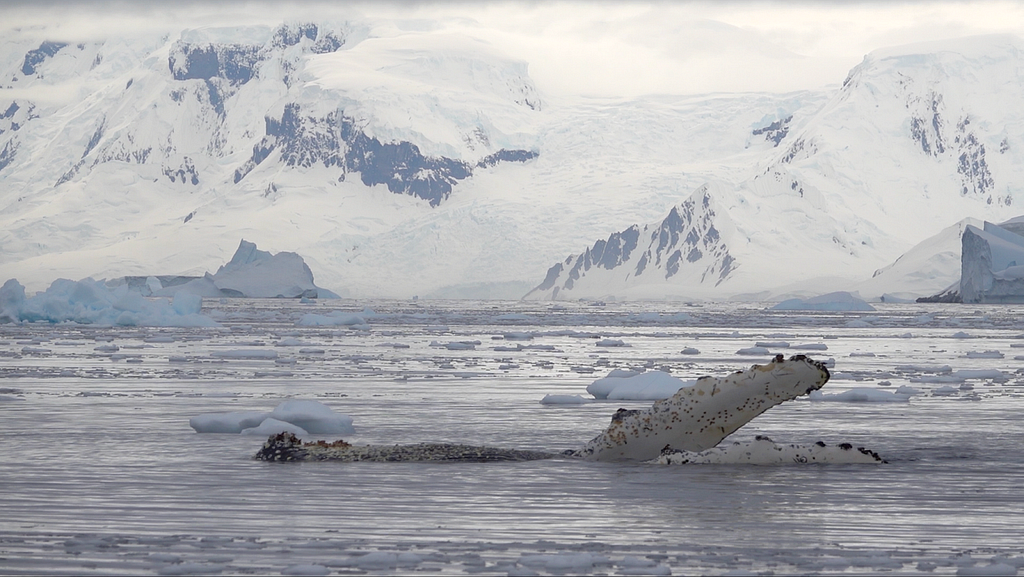
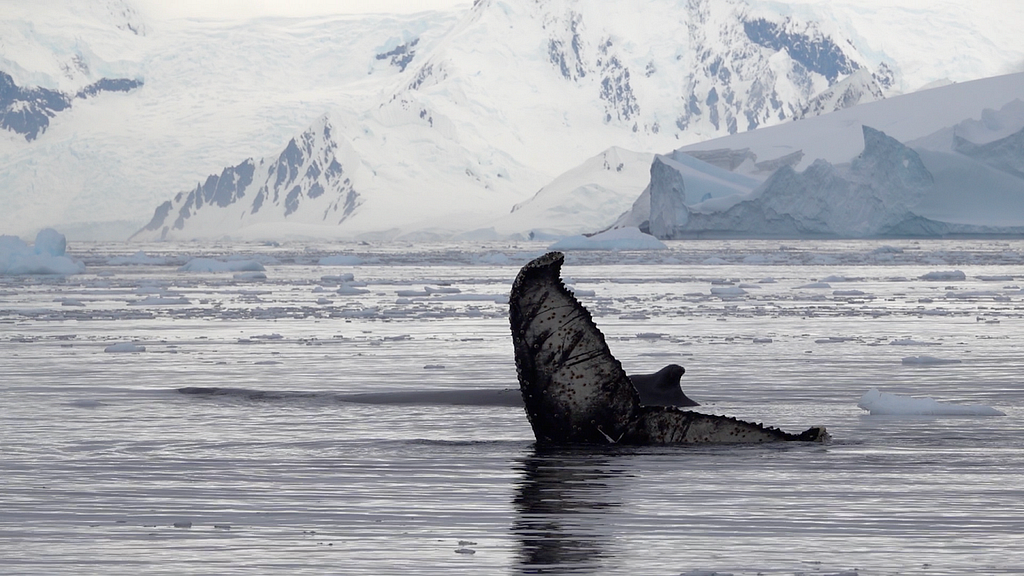
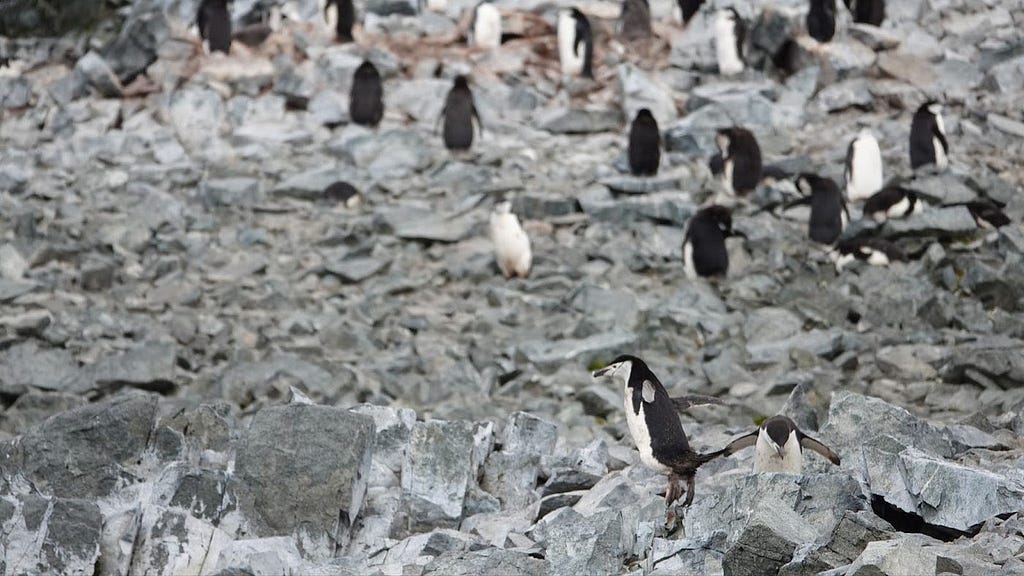
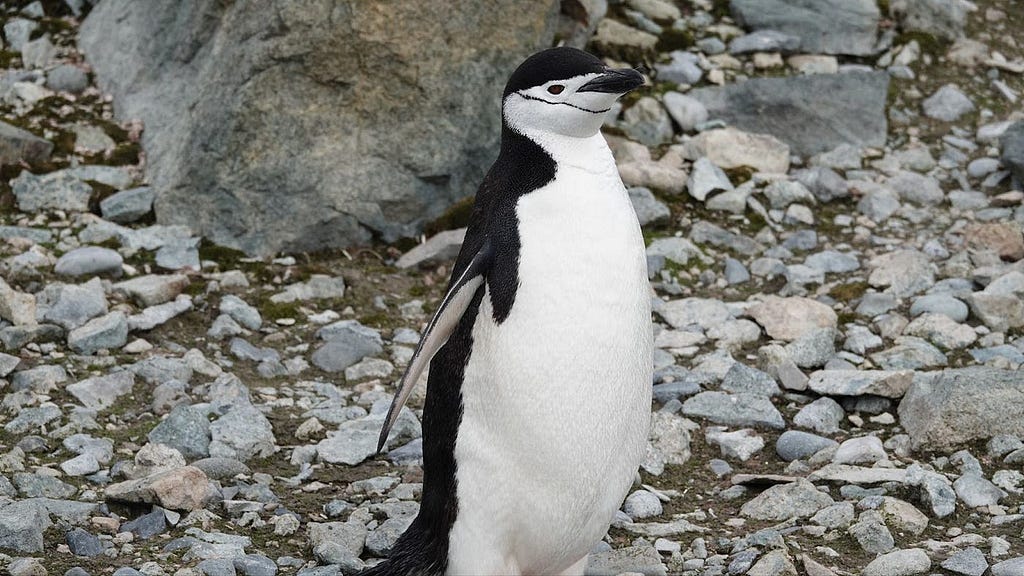
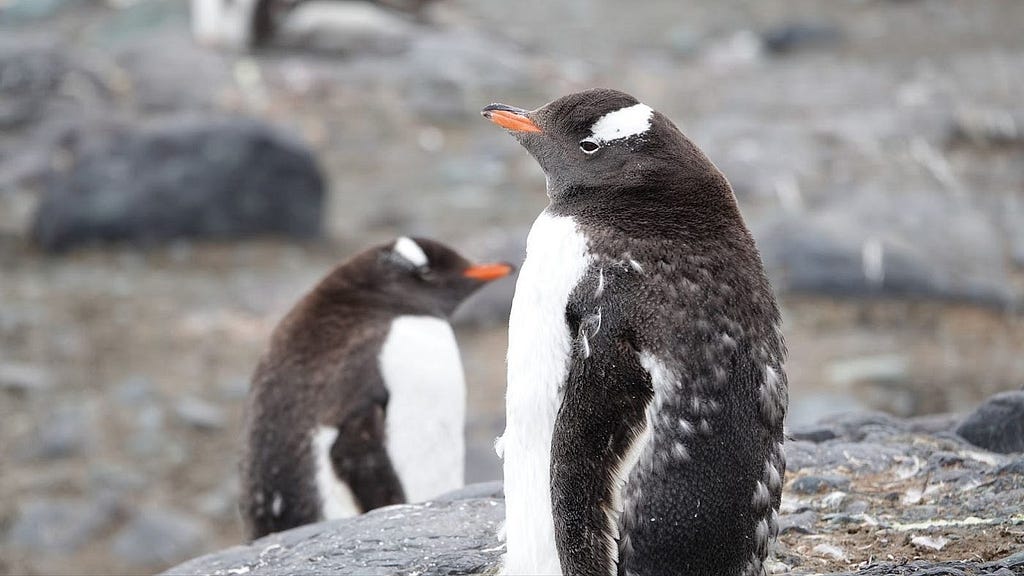
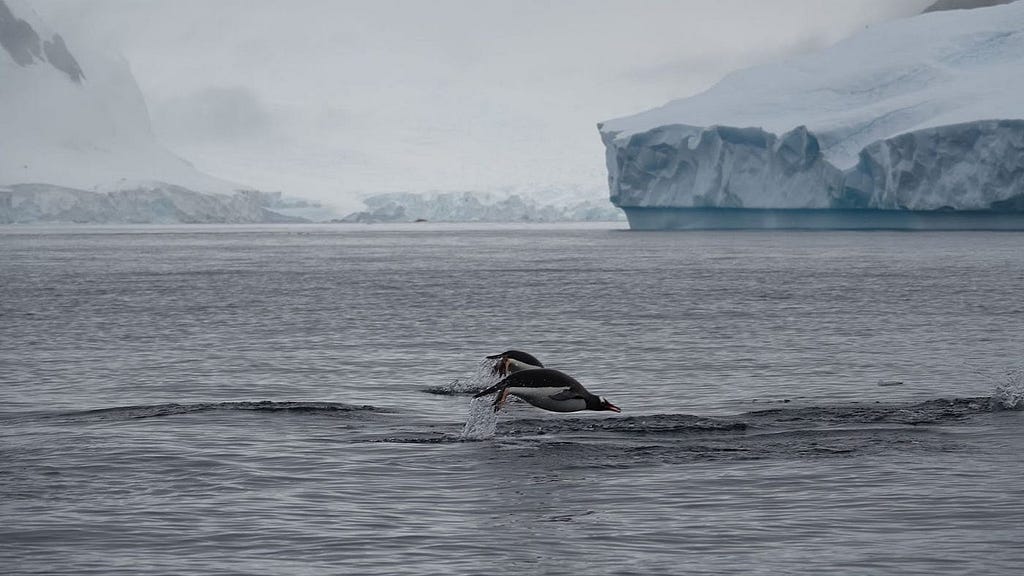
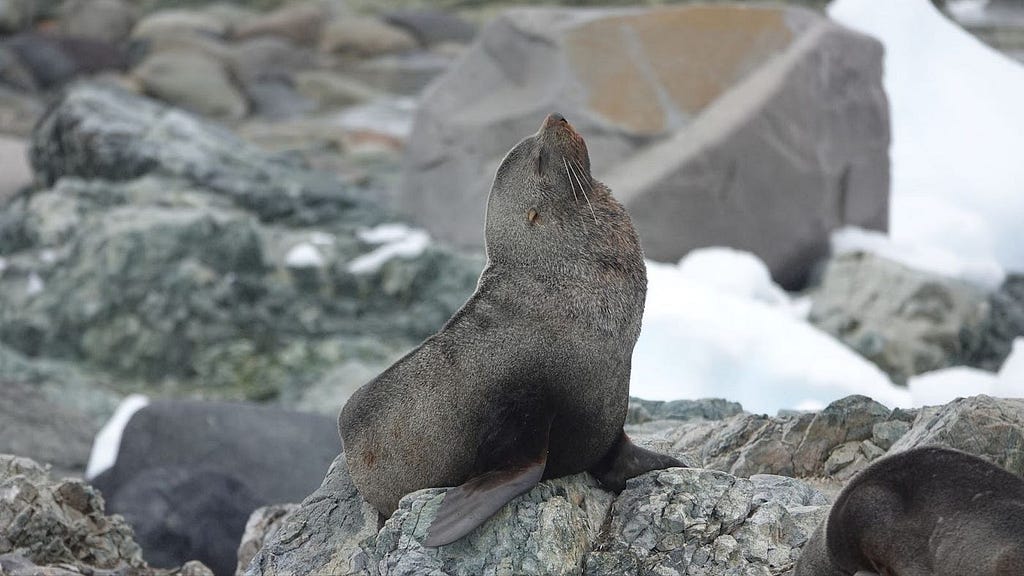
Follow Arthur Madrid, Sebastien Borget, and The Sandbox on Twitter.
Bridging Worlds: From Antarctica to The Metaverse was originally published in The Sandbox on Medium, where people are continuing the conversation by highlighting and responding to this story.


